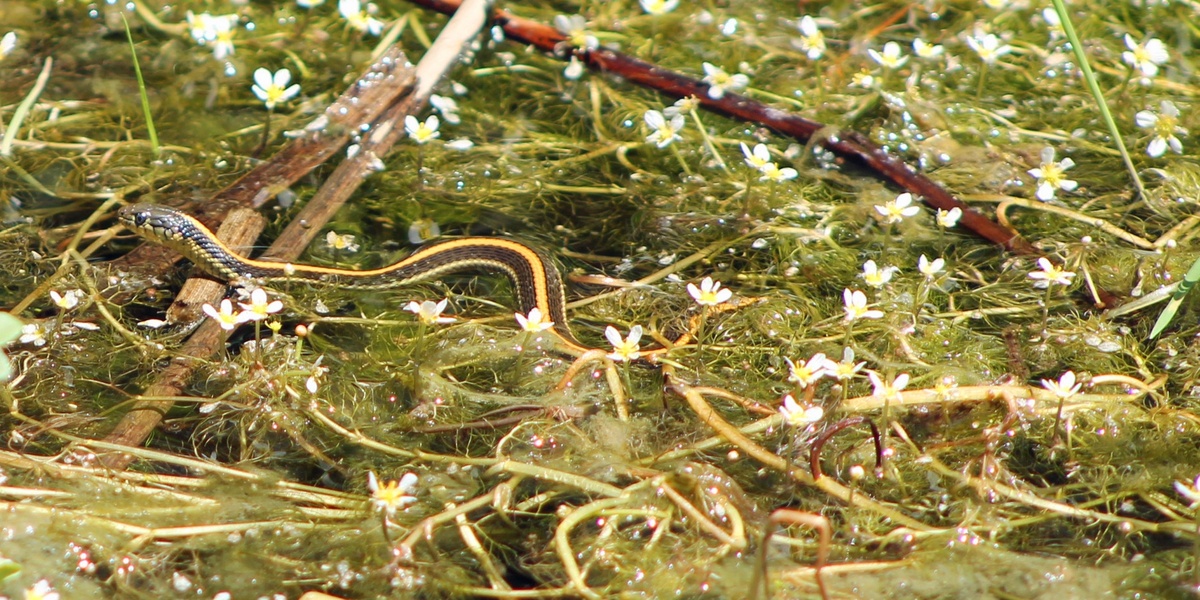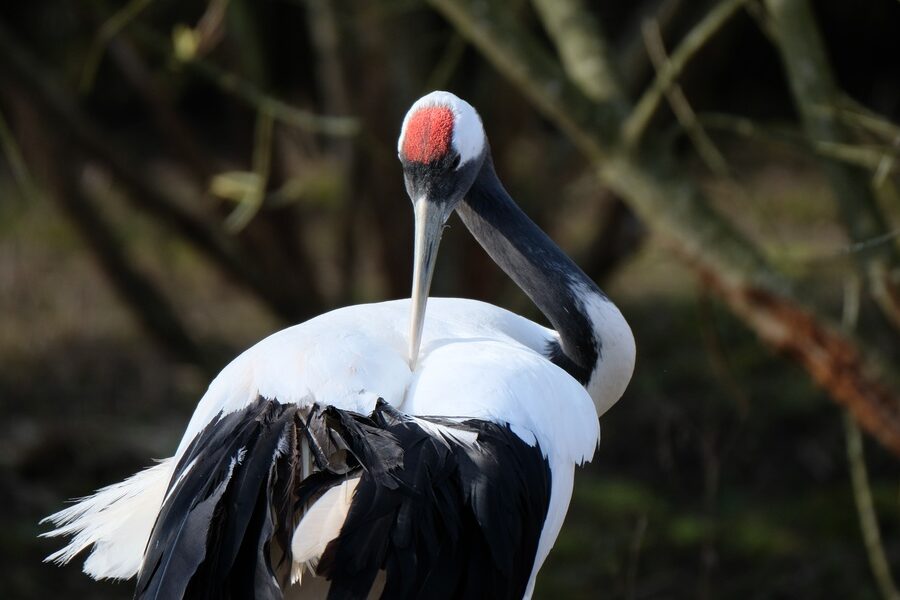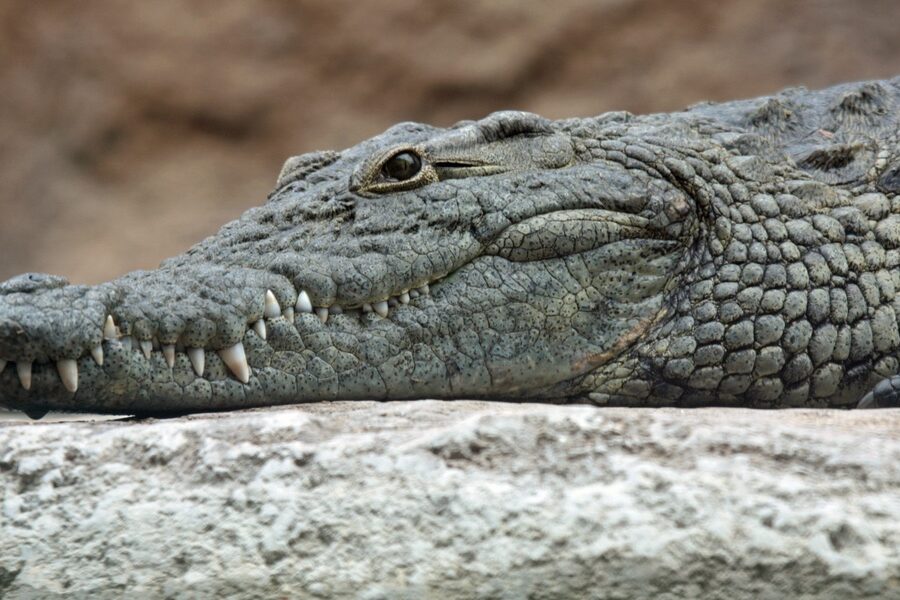Each spring, at sites such as Narcisse, Manitoba, thousands of garter snakes emerge from communal dens, an eye-catching display that highlights how successful these small reptiles are across North America and how the characteristics of a garter snake contribute to that success.
Those traits matter whether you’re spotting one in a backyard pond, studying wetland food webs, or thinking about local conservation: they determine how garter snakes move, what they eat, how they reproduce, and how they interact with people and other wildlife.
Garter snakes combine a distinctive set of physical traits, behaviors, and ecological roles that make them one of the most adaptable and recognizable North American snakes.
Below are 10 defining characteristics, grouped into three categories—physical traits, behavior & ecology, and human interactions & conservation—that explain why these snakes thrive. The piece will cover identification features, life history, and practical coexistence tips, showing how the characteristics of a garter snake influence everyday encounters (typical adult length is about 18–26 inches).
Physical characteristics
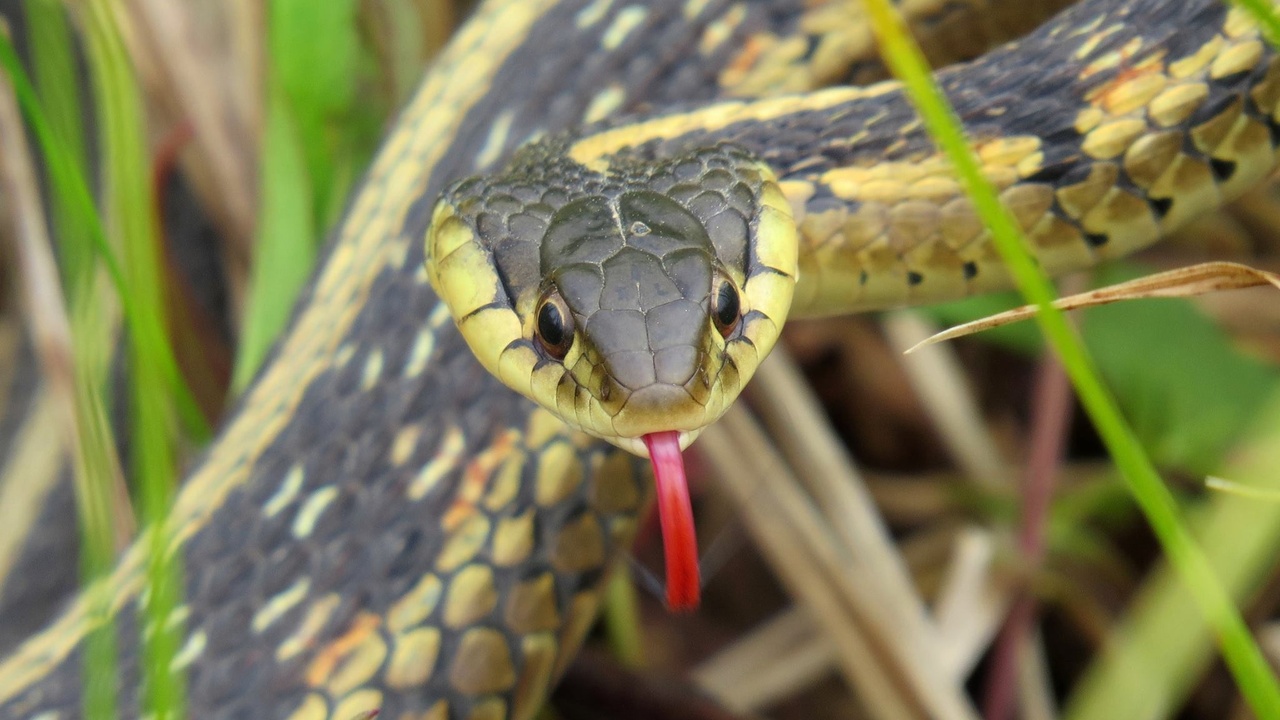
The visible features of garter snakes do more than make them easy to spot; they tie directly to survival, diet, and predator avoidance. The characteristics of a garter snake—from body size to scales and reproductive anatomy—help naturalists identify species in the field and predict behavior like where they hunt or hide.
Photographs that show stripe placement and scale texture are especially useful for ID; for more on comparing features across species, see how to identify common snakes in North America.
1. Size and coloration — a compact, striped profile
Adult garter snakes typically measure between 18 and 26 inches (45–66 cm), though regional variation exists and some individuals are smaller or larger. Average lengths hover near 20 inches for many populations, and extreme records can exceed 30 inches in a few locales.
Coloration ranges from olive-brown to nearly black with one or more longitudinal stripes in yellow, green, or blue shades. The common garter snake, Thamnophis sirtalis, often displays a central yellow dorsal stripe with lateral stripes that vary among subspecies.
Stripe position and background color are practical photographic ID tips: note whether the principal stripe runs down the vertebral column or is offset to the side, and compare contrast with the darker base color to distinguish similar species or regional morphs like blue-gray coastal variants.
2. Scale texture and stripe pattern — keeled scales and longitudinal stripes
Garter snakes have keeled scales, meaning each scale bears a slight raised ridge that gives a matte, non-glossy look and improves traction when moving across wet grass or leaf litter. That texture is a quick field clue when close-up photos are available.
Most species show three longitudinal stripes (one dorsal, two lateral), though some populations have checkered or reduced-striping patterns. Herpetologists also use scale counts along the body and under the tail to confirm species identifications, a verification method useful when pattern alone is ambiguous.
- ID tips: look for keeled (ridged) scales versus smooth scales.
- Note stripe color contrast—bright stripes on dark backgrounds are typical in many subspecies.
- Compare stripe placement: dorsal-centered vs. slightly lateral stripes help separate species.
3. Mild venom and dentition — effective for small prey, harmless to most people
Garter snakes are rear-fanged: their enlarged teeth sit toward the back of the mouth rather than at the front. Paired with a Duvernoy’s gland, they produce mild toxins that help subdue amphibian and invertebrate prey.
That oral secretions system is effective against small animals but is not considered dangerous to humans. University extension notes and herpetology texts emphasize that bites can cause localized swelling or allergic reactions in rare cases, but systemic toxicity is uncommon.
This mild venom mechanism influences diet: garter snakes often eat frogs, tadpoles, earthworms, and small fish—prey items that are easier to immobilize with oral toxins than by relying solely on constriction.
4. Reproductive anatomy — live birth instead of eggs
Most garter snakes are viviparous, giving birth to live young rather than laying eggs. Females retain embryos and deliver fully formed neonates, an adaptation that permits reproduction in cooler climates where exposed eggs would risk failure.
Typical litter sizes range from about 12 to 40 young, depending on species and the size and condition of the female. For example, Thamnophis sirtalis females commonly give birth in late summer, which times neonate activity to the warm months before the first frosts.
Live birth reduces dependency on warm nesting sites and helps populations persist at higher latitudes and elevations where egg incubation in soil would be unreliable.
Behavior and ecology
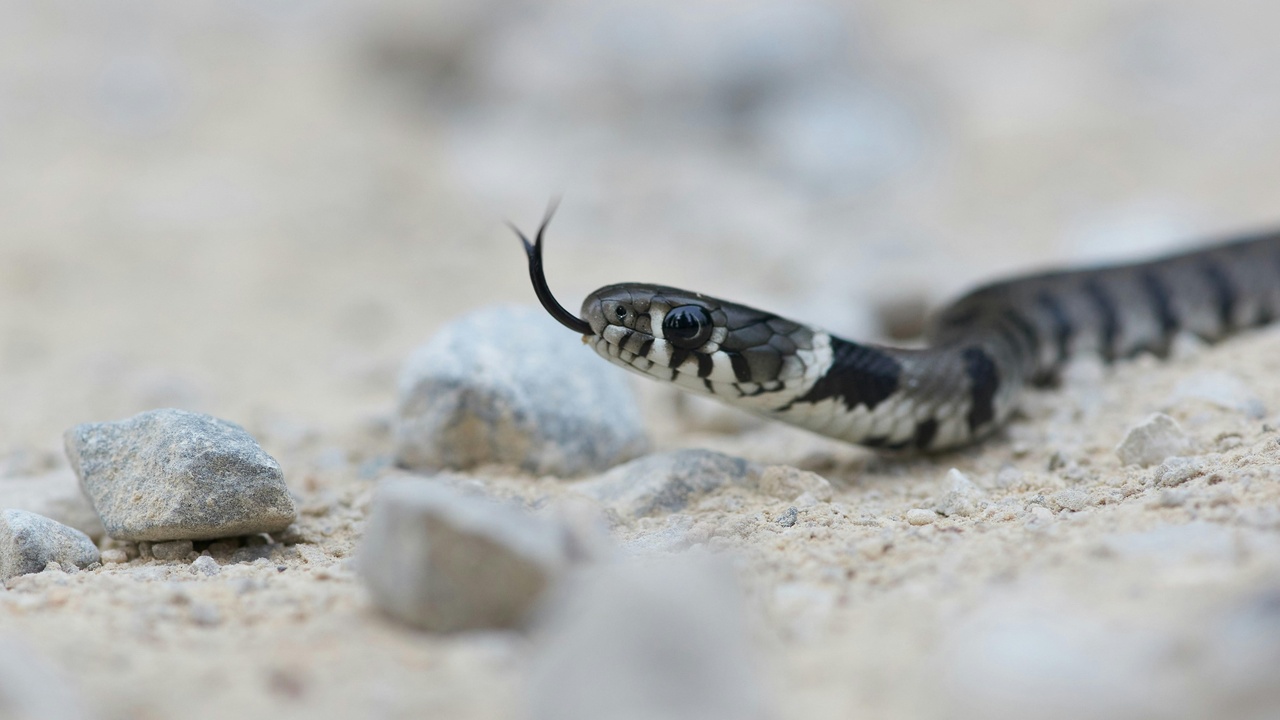
Behavior links closely to ecology: garter snakes switch between solitary foraging and communal behaviors, take advantage of a broad diet, and depend on temperature cues to time annual cycles. Those behavioral traits shape their role in wetlands, meadows, and even suburban yards.
Observations at places like the Narcisse dens show how communal denning and synchronized spring emergence are central to population survival and mating dynamics.
5. Diet and hunting strategies — opportunistic feeders
Garter snakes are opportunistic generalists that feed on amphibians, fish, earthworms, slugs, and small rodents. The exact diet mix depends on habitat: wet sites produce more fish and tadpoles; gardens and lawns often supply earthworms and slugs.
- Typical prey: frogs, tadpoles, small fish, earthworms, slugs, and occasionally voles.
- They use tongue-flicking and the Jacobson’s organ to detect chemical trails and locate prey.
- Hunting tactics: strike-and-swallow is common; some individuals use partial constriction or hold prey with mild oral secretions.
Dietary studies frequently report amphibians and earthworms among the most common items in moist habitats, which explains why backyard ponds and wet gardens often support healthy garter snake populations. See backyard pond wildlife and habitats for habitat tips that also benefit these snakes.
6. Thermoregulation and seasonal cycles — sunning, cooling, and communal denning
Garter snakes are ectotherms that regulate body temperature behaviorally. Daily basking on rocks or warm soil allows activity, while cooler periods reduce movement and feeding.
Seasonal cycles are pronounced: spring emergence from hibernacula, spring mating, summer feeding and growth, late-summer birthing, and fall migration back to dens. Active months often span April–October in temperate regions, shifting earlier or later with latitude.
Communal dens—hibernacula—can host hundreds to thousands of snakes at famous sites. Those aggregations conserve warmth and improve survival in cold climates, a social behavior with clear ecological benefits.
7. Habitat and range — adaptable across diverse environments
Garter snakes occur across much of North America—from southern Canada through the United States and into parts of Mexico—and occupy a wide array of habitats. They’re found in wetlands, meadows, woodlands, marsh edges, and suburban yards.
Habitat flexibility allows populations to persist in both northern and temperate regions and explains why people commonly encounter garter snakes near ponds, garden beds, and roadside ditches. That adaptability also buffers many populations against localized habitat changes.
Human interactions and conservation
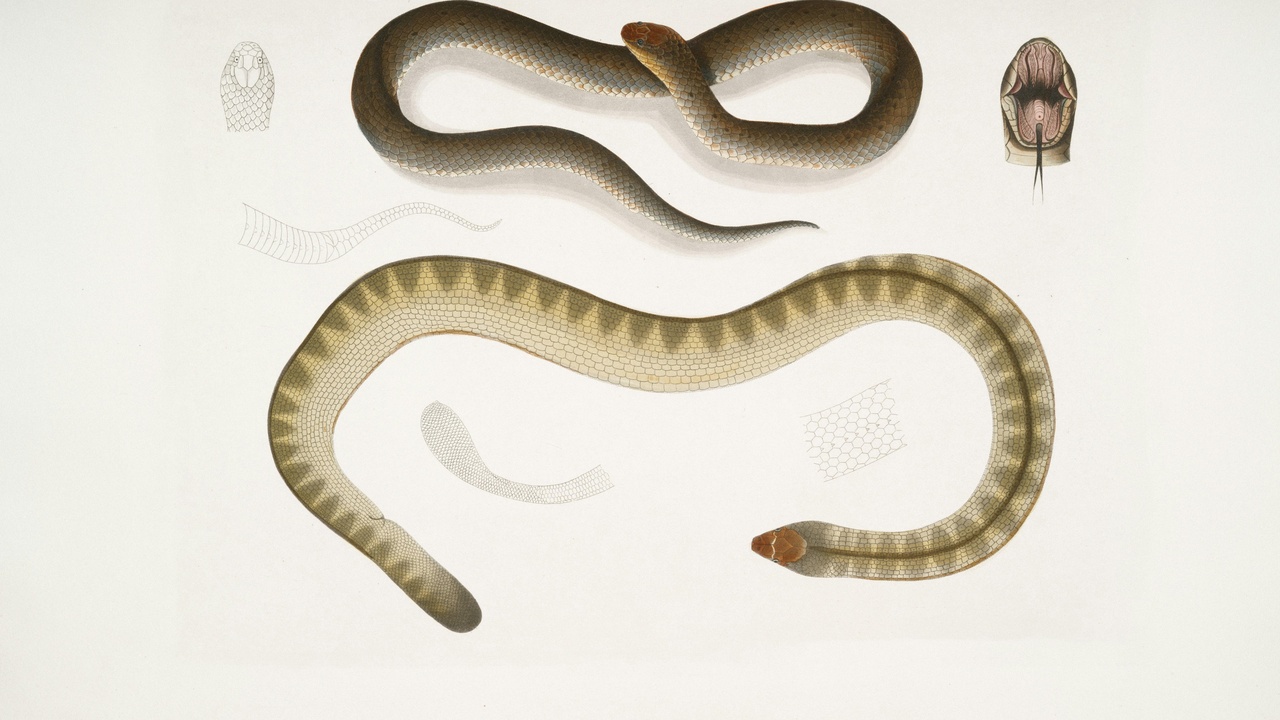
How garter snakes behave around people is shaped by the same traits that make them ecologically useful. Understanding the characteristics of a garter snake helps gardeners appreciate their pest-control role and follow sensible coexistence practices.
Practical steps—like preserving pond margins and reducing pesticide use—benefit both snakes and the broader yard ecosystem.
8. Predators and lifespan — from eggs to decade-long adults
Wild garter snakes typically live around 4–10 years, depending on predation pressure and habitat quality; captive individuals often live longer with steady food and no predators.
Common predators include raptors (hawks, herons), mammals such as raccoons and foxes, and larger snake species. High juvenile mortality is normal, and large litters (12–40 young) help offset those losses.
Field observers often note juvenile predation near pond edges where young snakes concentrate while learning to forage and avoid threats.
9. Ecological role — backyard pest control and food-web connectivity
Garter snakes act as mid-level predators, helping control invertebrate and small vertebrate populations and linking aquatic and terrestrial food webs. By consuming tadpoles, slugs, and earthworms near pond margins, they influence prey abundance at those microhabitats.
- Pest control: reduce slug and small rodent numbers in gardens.
- Indicator species: their presence reflects wetland and pond health.
- Prey base: they feed raptors and larger mammals, connecting trophic levels.
Backyard ponds often showcase this role—garter snakes feeding on tadpoles help maintain balanced amphibian communities while providing food for herons and hawks.
10. Conservation and coexistence — practical tips for people
Most garter snake species are common, but local declines occur due to habitat loss, road mortality, pollution, and invasive species. Small actions in yards and communities can make a difference.
Two actionable steps:
- Preserve pond margins and native vegetation; avoid pesticides that reduce earthworms and amphibians.
- Create safe shelter away from high-traffic areas—brush piles, rock piles, and undisturbed edges provide cover for snakes and their prey.
When encountering injured snakes, or if a snake needs relocation, contact a local wildlife rehabilitator or consult resources on what to do if you find an injured snake. State wildlife agencies and university extension pages offer humane handling guidance and local contacts.
Summary
- Garter snakes are compact, often 18–26 inches long, and recognizable by longitudinal stripes and keeled scales; those ID traits help spot species quickly in the field (Narcisse dens are a vivid example of communal behavior).
- They possess rear-fanged dentition and a Duvernoy’s gland that produces mild toxins useful for small prey, yet bites are rarely dangerous to people.
- Viviparity (live birth) and flexible diets (amphibians, fish, earthworms) let garter snakes thrive across varied habitats from Alaska down into parts of Mexico.
- As mid-level predators and prey for raptors, they offer pest control and connect aquatic-terrestrial food webs; simple habitat practices improve coexistence and conserve local populations.
- Keep learning about the characteristics of a garter snake, protect pond edges, and report sightings to citizen-science platforms like iNaturalist to support local monitoring and conservation.
